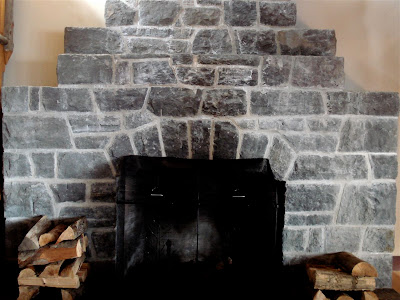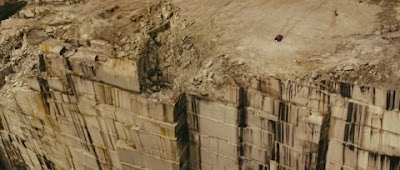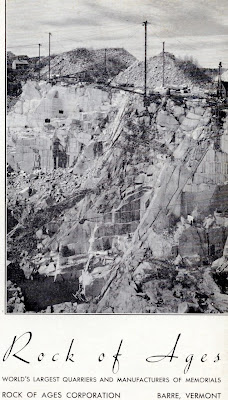
Fireplace in Paradise Inn at Mt. Rainier
Each fireplace is made of various sized rough blocks of what appears to be granodiorite from the Tatoosh pluton. The pluton ranges in age between 26 and 14 million years old. I could not, however, find any information about which rock was used. The stones reportedly came from a local quarry.
One feature that stands out on several blocks is the row of drill holes. They show how the quarrymen made blocks by drilling a line of several-inch deep holes and dropping in two metal shims, each of which was bent at the top so the shims wouldn’t disappear into the cavity. He would then drop a wedge of steel between the shims and pound the row of plugs until the rock split on the perforation.

Close up of Mr. Tarbox’s plug and feather quarrying method
Quarrymen call this the plug and feather method. It has used by stone masons for thousands of years though it has an interesting story in the US. According to quarry historians, a man named Mr. Tarbox introduced the method in this country in 1803. His work was noticed by a member of the commission to build a new jail in the Boston area, who tracked down Tarbox, hired him on spot, and got him to teach the method to other builders in the region. That knowledge spread quickly and soon the price of cut stone dropped appreciably.
The plug and feather method is still in use though it has been modified significantly with hydraulic air drills and hydraulic expanders. In places such as the Indiana limestone building district, quarrymen no longer need to swing a hammer.
Down lower on Mt. Rainier, at Longmire, another building makes use of the local stone, too. The visitor center is built of large boulders that must have been collected from the nearby river. The boulders are andesite, granodiorite, welded tuff, and rhyolite. Builders even used the boulders to make the chimney.


